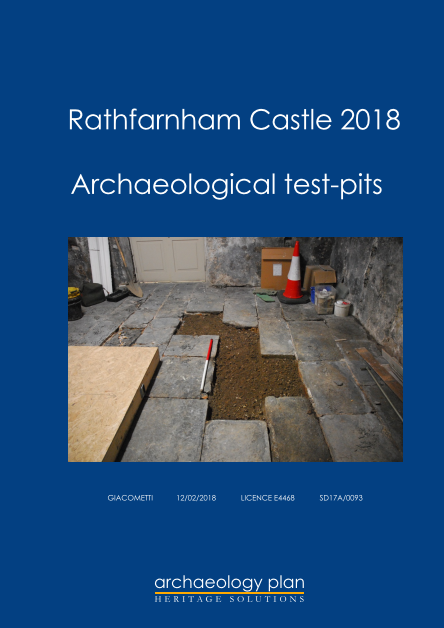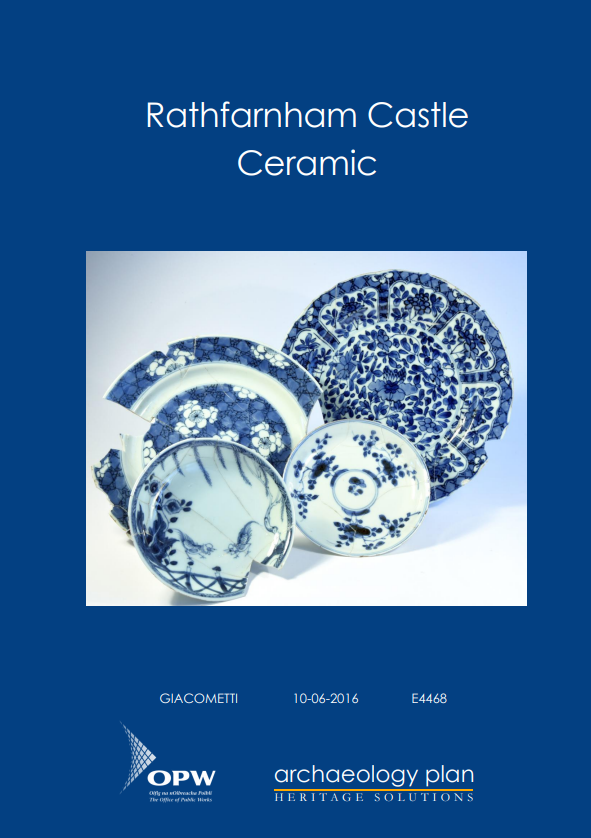Rathfarnham Castle
Excavations at Rathfarnham Castle, Co. Dublin were carried out by Antoine Giacometti in 2014, 2016 and 2018 during OPW conservation works. The castle was constructed by Archbishop Adam Loftus in c. 1583, and was heavily remodelled during the 18th century. A wealth of archaeological information was recovered during the excavations, including over sixty previously-unrecorded 16th century features, but the highlight was the discovery of 16,406 high-status artefacts from a pit in the southwest tower. The process of conservation and analysis of the artefacts is complete.
Click the images of the reports below to download them.
The conservation process exposed new features on some of the organic and metal artefacts, including a number of additional 17th century coins. Cleaning of the textile identified well-preserved fragments of cotton, canvas, fine leather and silk ribbons. Conservation of a folding cut-throat razor identified decorated bone and tortoiseshell inlay on the handle. Scratched numerals or letters written on the lead weights could finally be deciphered: these were mostly ‘X’s, though one had a possible ‘XIL’.
The cleaning of lumps of lead waste showed that some of these were composed of partially-melted window cames. Combined with the large number of broken window panes and the evidence for the manufacture of gunflint, this suggests the systematic robbing out of lead from the windows of the southwest tower for the manufacture of projectiles during the Confederate or Williamite Wars in the mid- to late 17th century, and is backed up by documentary evidence of military occupation of the castle during this time. Detailed analysis on the lead glass assemblage was carried out by the VICARTE Institute in Lisbon. The first phase (µ-PIXE analysis) confirmed the identification of this material as lead-crystal glass.
Archaeology Ireland visited Rathfarnham Castle in 2014 – the resulting article can be found here.











